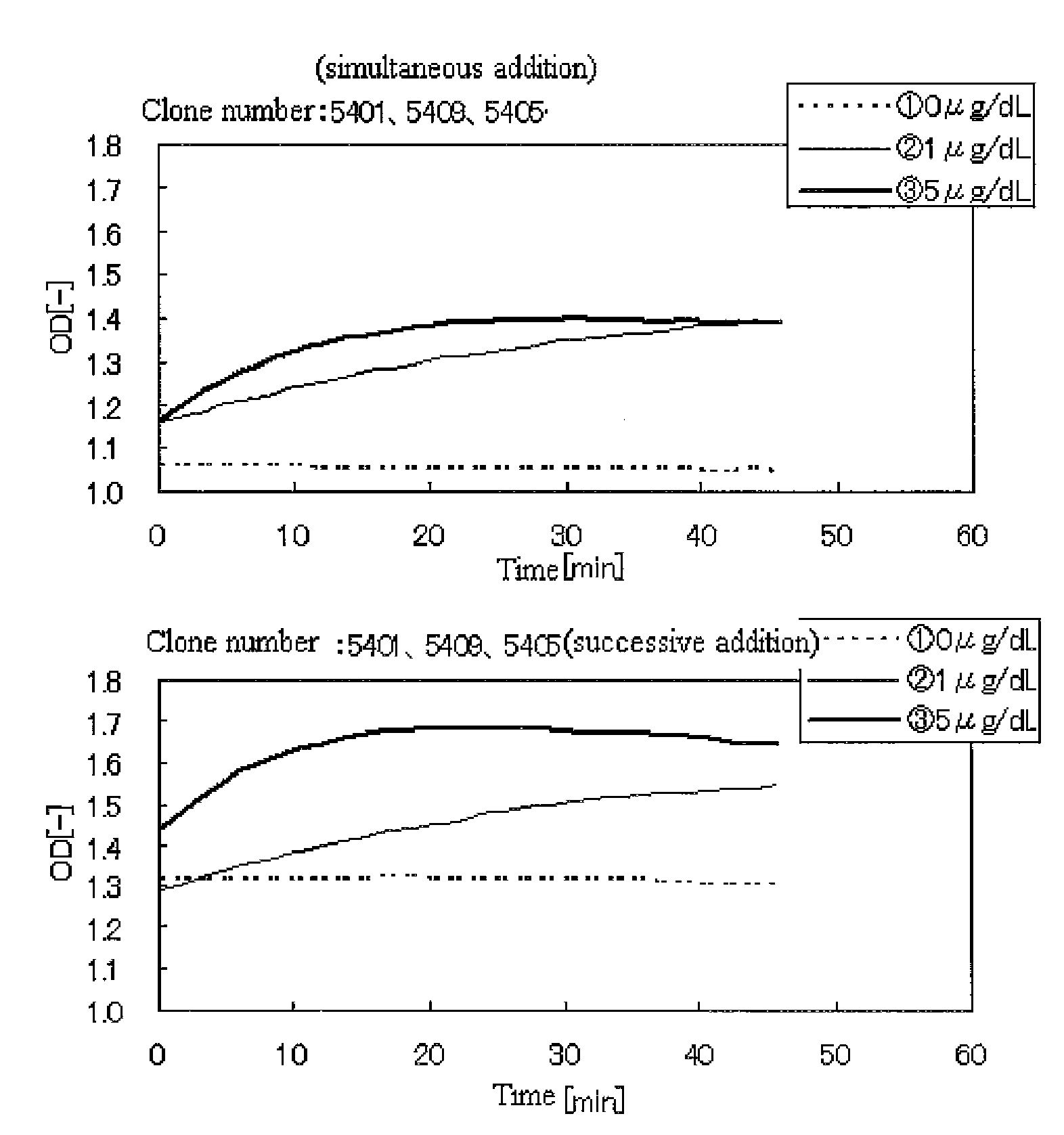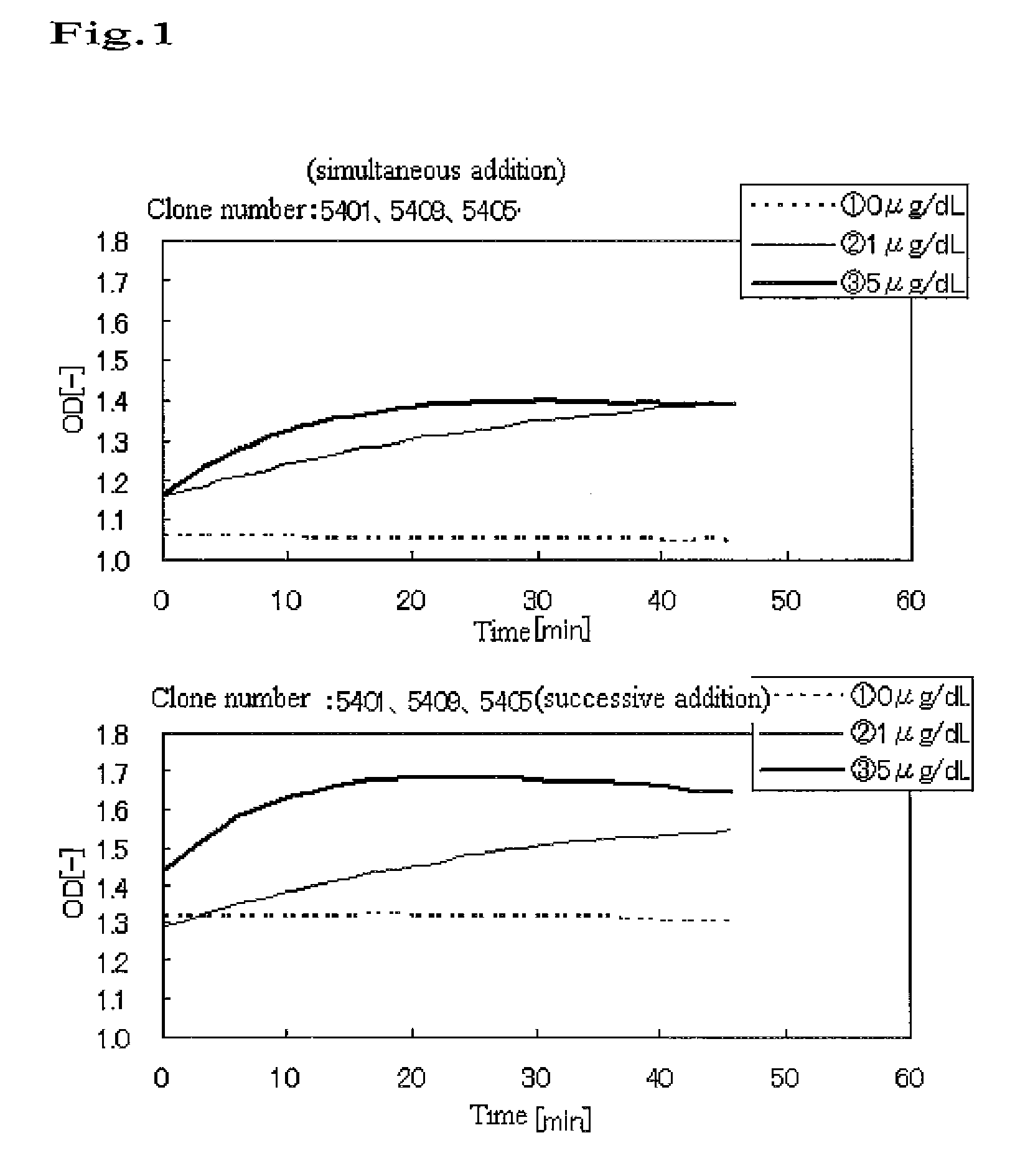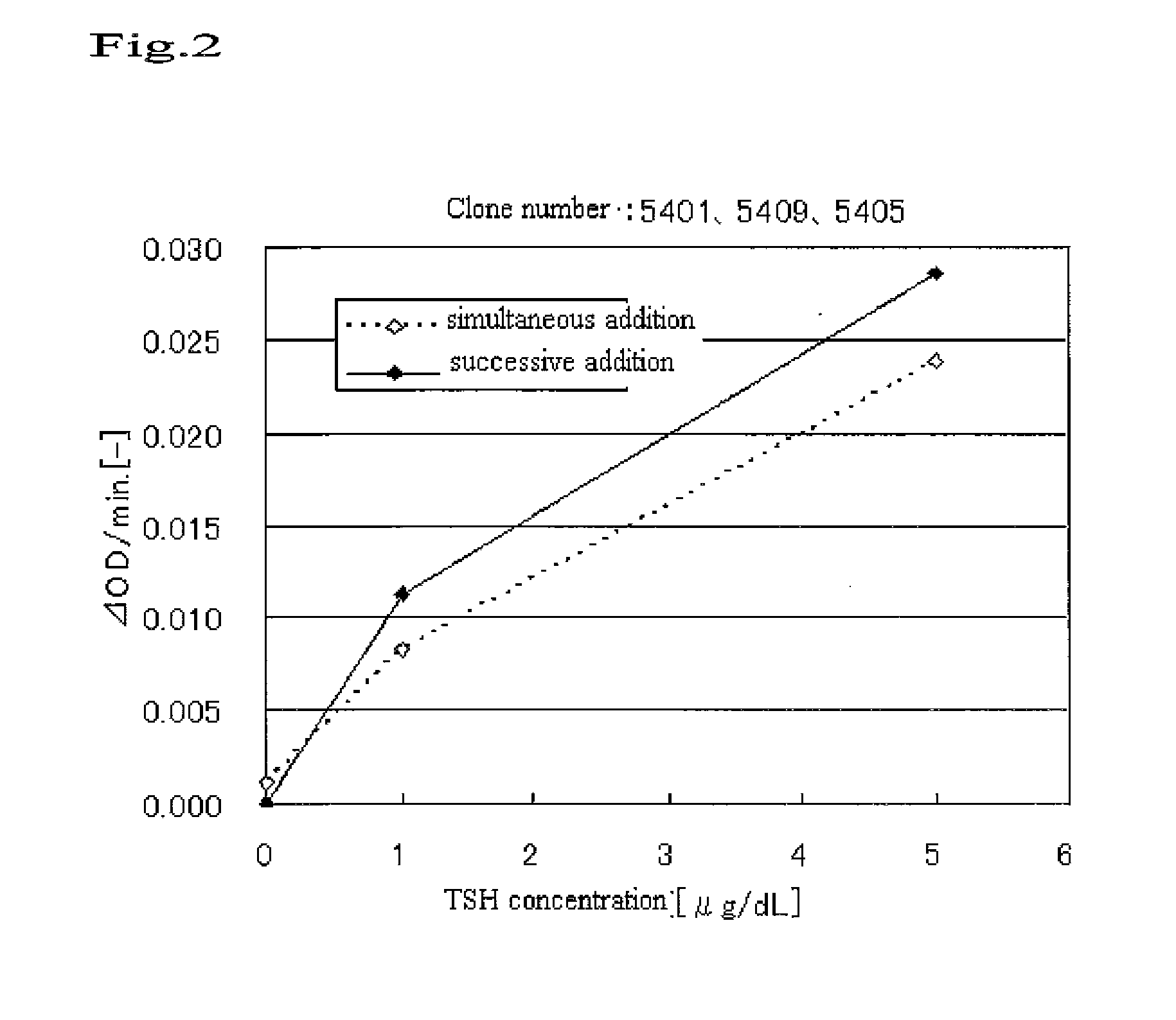Method of high sensitive immunoassay
a high-sensitivity, immunoassay technology, applied in the field of immunoassays, can solve the problems of complicated assay operations, heterogeneous techniques are inferior to homogeneous techniques in promptness and convenience, and complicate the preparation of reagents, so as to enhance the agglutination reaction of tsh.
- Summary
- Abstract
- Description
- Claims
- Application Information
AI Technical Summary
Benefits of technology
Problems solved by technology
Method used
Image
Examples
example 1
Detection of Thyroid Stimulating Hormone (TSH)
(1) Preparation of Antibody-Bound Latex
[0041]Seven clones of the commercially available anti-TSH monoclonal antibody (Medix) were purchased. These seven clones recognize any of three epitopes in the β-subunit of TSH. A general method for preparing monoclonal antibodies is described in, for example, Handbook of Experimental Immunology, (NAKASHIMA, Izumi (ed.), the University of Nagoya Press). Polystyrene latex particles (particle diameter: 0.5 μm, JSR) were diluted with glycine buffer (pH 9.6) to bring a solid concentration to 3%. In a similar manner, the seven clones of the anti-TSH antibody were adjusted at a concentration of approximately 1 mg / ml. The equivalent amounts of the seven clones were added to the latex dispersion, the resulting mixture was agitated, and the reaction was allowed to proceed at room temperature for 1 hour. Centrifugation was carried out at 11,000 rpm for 15 minutes, the supernatant was removed, and 0.2% BSA in ...
PUM
 Login to View More
Login to View More Abstract
Description
Claims
Application Information
 Login to View More
Login to View More - R&D
- Intellectual Property
- Life Sciences
- Materials
- Tech Scout
- Unparalleled Data Quality
- Higher Quality Content
- 60% Fewer Hallucinations
Browse by: Latest US Patents, China's latest patents, Technical Efficacy Thesaurus, Application Domain, Technology Topic, Popular Technical Reports.
© 2025 PatSnap. All rights reserved.Legal|Privacy policy|Modern Slavery Act Transparency Statement|Sitemap|About US| Contact US: help@patsnap.com



